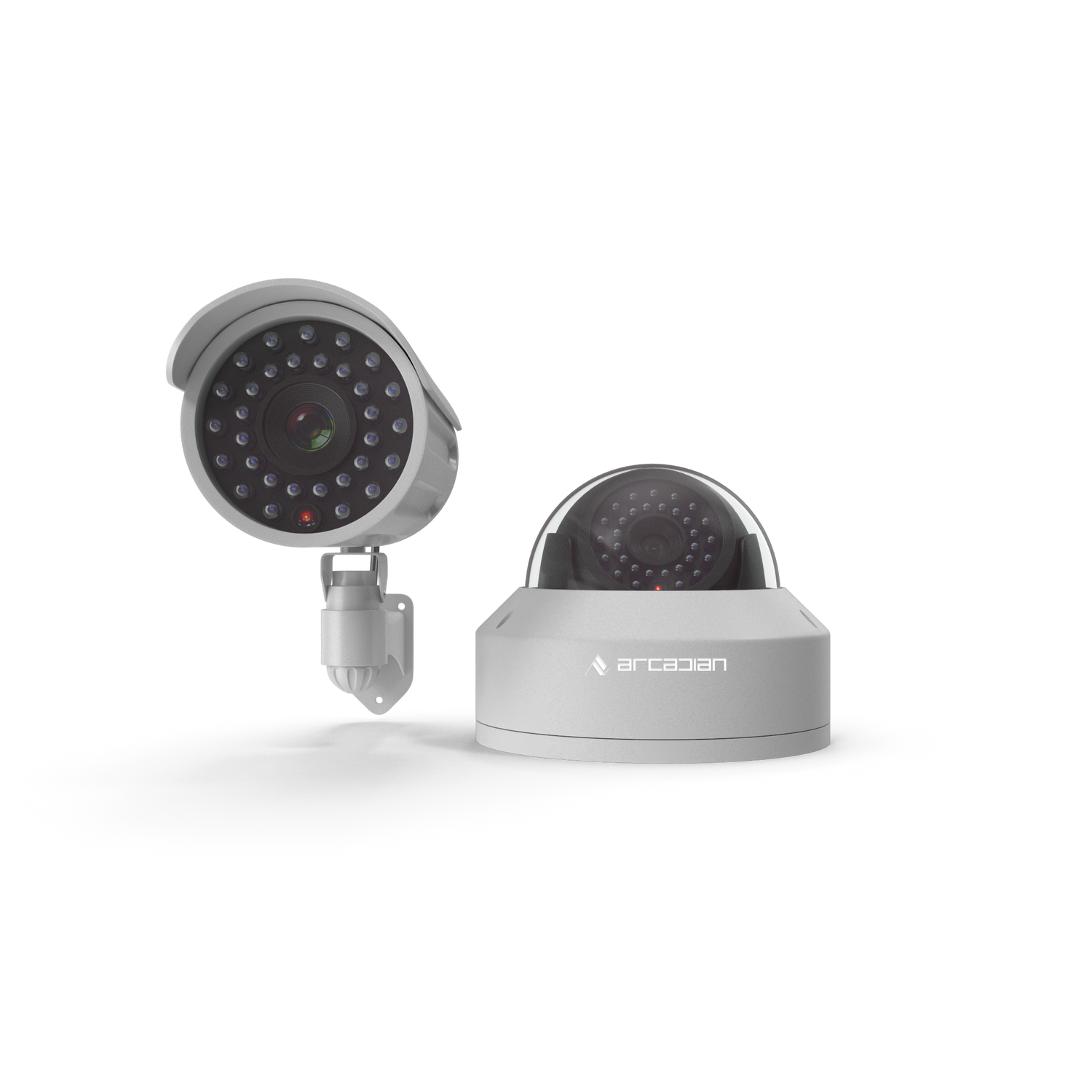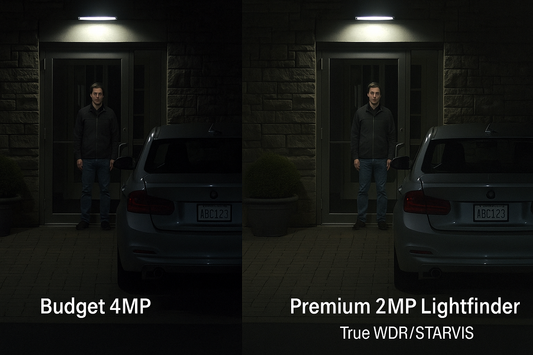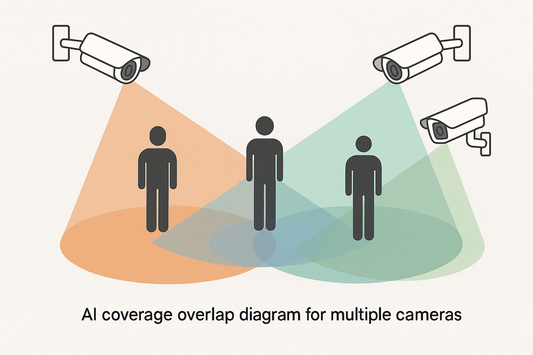The Ultimate Guide to Choosing a Safe and Secure Daycare for Your Child
Selecting the right daycare facility for your child is one of the most important decisions you'll make as a parent. Understanding how to choose a daycare that prioritizes safety, security, and quality care requires careful consideration of multiple factors. This comprehensive guide will walk you through every aspect of the...

- Understanding the Basics: How to Choose a Daycare Center
- Special Considerations: How to Choose a Daycare for Infant Care
- Evaluating Professionals: How to Choose a Daycare Provider
- Regional Considerations: How to Choose a Daycare Centre
- Decision-Making Strategies: How to Pick a Daycare
- Essential Elements: Choosing a Daycare Checklist
- Professional Selection Process: How to Select a Daycare
- Key Factors: What to Look for in Daycare
- Critical Assessment: Things to Look for in a Daycare
- Research and Discovery: How to Find a Good Daycare
- Advanced Safety Technologies in Modern Daycare
- The Role of Technology in Daycare Safety
- Regulatory Compliance and Quality Standards
- Financial Considerations and Value Assessment
- Making the Final Decision
- Long-Term Considerations and Adaptation
- How AI Enhances Your Daycare Selection Process
Selecting the right daycare facility for your child is one of the most important decisions you'll make as a parent. Understanding how to choose a daycare that prioritizes safety, security, and quality care requires careful consideration of multiple factors. This comprehensive guide will walk you through every aspect of the selection process, from initial research to final decision-making, ensuring you find the perfect environment where your child can thrive.
The process of how to choose a daycare has evolved significantly in recent years, with technology playing an increasingly important role in facility operations and child safety. Modern parents need to understand not only traditional safety measures but also the advanced technologies that distinguish exceptional daycare centers from merely adequate ones.
Understanding the Basics: How to Choose a Daycare Center
Learning how to choose a daycare center begins with understanding your family's specific needs and priorities. Every family has unique requirements based on their child's age, developmental stage, and individual needs. The foundation of how to choose a daycare center lies in clearly defining what you're looking for in terms of educational philosophy, safety standards, and facility features.
When considering how to choose a daycare center, location and convenience often play significant roles in the decision-making process. However, these practical considerations should never overshadow the critical importance of safety, quality of care, and educational programming. The best approach to how to choose a daycare center involves balancing convenience with quality to find a facility that meets all your requirements.
The regulatory environment surrounding daycare facilities has become increasingly stringent, making it essential to understand licensing requirements and safety standards when learning how to choose a daycare center. This knowledge will help you identify facilities that meet minimum requirements and those that exceed them.
Special Considerations: How to Choose a Daycare for Infant Care
Understanding how to choose a daycare for infant care requires additional attention to specialized needs and safety requirements. Infants require more individualized attention, specialized feeding schedules, and enhanced safety measures that not all daycare facilities can provide adequately.
When learning how to choose a daycare for infant care, the caregiver-to-child ratio becomes critically important. Infants need more personalized attention than older children, and facilities specializing in infant care should maintain lower ratios to ensure optimal care quality.
The physical environment considerations for how to choose a daycare for infant care include specialized sleeping areas, bottle preparation facilities, and age-appropriate play spaces. These facilities should be designed specifically for infant needs rather than adapted from general childcare spaces.
Safety protocols for how to choose a daycare for infant care must include specialized procedures for feeding, sleeping, and monitoring that address the unique vulnerabilities of very young children. These protocols should be clearly documented and consistently implemented.
Evaluating Professionals: How to Choose a Daycare Provider
The quality of care your child receives depends heavily on the individual caregivers, making it essential to understand how to choose a daycare provider with qualified, experienced staff. The best facilities invest in hiring and training high-quality caregivers who are passionate about child development and safety.
When evaluating how to choose a daycare provider, consider the educational background and training requirements for staff members. Look for facilities that require early childhood education credentials and provide ongoing professional development opportunities for their caregivers.
The stability of staff is another crucial factor in how to choose a daycare provider. High turnover rates can disrupt children's routines and emotional security, so seek facilities with low turnover and long-term employees who can provide consistency in care.
Background check procedures and hiring practices should be transparent and thorough when you're learning how to choose a daycare provider. Facilities should be able to explain their screening processes and provide confidence in their staff selection procedures.
Regional Considerations: How to Choose a Daycare Centre
Understanding how to choose a daycare centre involves considering regional factors such as local regulations, cultural expectations, and community standards. Different regions may have varying requirements for licensing, staff qualifications, and safety protocols.
When learning how to choose a daycare centre, research local licensing authorities and understand the specific requirements in your area. This knowledge will help you evaluate whether potential facilities meet or exceed local standards.
The availability of specialized programs and services may vary by region, making it important to understand local options when considering how to choose a daycare centre. Some areas may offer enhanced educational programs, specialized therapies, or unique facility features that could benefit your child.
Community integration and local partnerships can enhance the quality of daycare services, so consider these factors when learning how to choose a daycare centre. Facilities that actively engage with their local communities often provide richer experiences for children.
Decision-Making Strategies: How to Pick a Daycare
Developing a systematic approach to how to pick a daycare will help you make an informed decision that considers all relevant factors. Create a comprehensive evaluation framework that includes safety, educational quality, staff qualifications, and facility features.
When learning how to pick a daycare, prioritize your criteria based on your family's specific needs and values. While all factors are important, understanding your priorities will help you make trade-offs when no single facility meets all your requirements perfectly.
The decision-making process for how to pick a daycare should include site visits, interviews with staff, and conversations with current parents. These direct interactions will provide insights that cannot be gained through online research or promotional materials alone.
Documentation and record-keeping during your search for how to pick a daycare will help you compare facilities objectively. Maintain detailed notes about each facility's strengths and weaknesses to support your final decision.
Essential Elements: Choosing a Daycare Checklist
Creating a comprehensive checklist for choosing a daycare ensures you don't overlook important factors during your evaluation process. This systematic approach to choosing a daycare will help you gather consistent information about each facility you consider.
Your checklist for choosing a daycare should include safety measures, educational programming, staff qualifications, facility features, and administrative policies. Each category should have specific criteria that you can evaluate consistently across different facilities.
The evaluation process for choosing a daycare should include both announced and unannounced visits to observe normal operations. This approach will give you a more complete picture of daily life at the facility.
Financial considerations are an important part of choosing a daycare, including not only tuition costs but also additional fees, payment policies, and available financial assistance programs. Understanding the complete cost structure will help you make a sustainable decision.
Professional Selection Process: How to Select a Daycare
Learning how to select a daycare involves developing professional evaluation skills that go beyond surface-level impressions. This process requires objective assessment of multiple factors that contribute to quality childcare.
The methodology for how to select a daycare should include structured interviews with administrators and caregivers, systematic facility evaluations, and thorough review of policies and procedures. This professional approach ensures you gather comprehensive information.
When learning how to select a daycare, develop specific questions that address your most important concerns and priorities. These questions should be asked consistently at each facility to enable meaningful comparisons.
The timeline for how to select a daycare should allow sufficient time for thorough evaluation without rushing the decision. Start your search well in advance of when you need care to ensure you have adequate time for proper evaluation.
Key Factors: What to Look for in Daycare
Understanding what to look for in daycare requires knowledge of both obvious and subtle indicators of quality care. The most important factors often relate to safety, staff quality, and educational programming.
Physical safety measures are fundamental to what to look for in daycare, including secure entry systems, childproofed environments, and appropriate safety equipment. These visible safety measures indicate a facility's commitment to child protection.
The educational philosophy and programming should be clear priorities in what to look for in daycare. Look for facilities that can articulate their approach to child development and demonstrate how they implement educational activities.
Staff interaction with children provides valuable insights into what to look for in daycare. Observe how caregivers communicate with children, manage behavior, and respond to individual needs during your visits.
Critical Assessment: Things to Look for in a Daycare
Developing a comprehensive understanding of things to look for in a daycare will help you identify both strengths and potential concerns at each facility. This critical assessment approach ensures you don't miss important warning signs or overlook valuable benefits.
The physical environment encompasses many important things to look for in a daycare, including cleanliness, organization, age-appropriate materials, and adequate space for activities. These environmental factors significantly impact children's comfort and development.
Communication systems between caregivers and parents are essential things to look for in a daycare. Facilities should have clear procedures for daily updates, incident reporting, and ongoing communication about your child's progress and needs.
Emergency procedures and safety protocols are critical things to look for in a daycare. Facilities should have documented procedures for medical emergencies, natural disasters, and security threats, along with regular training for staff members.
Research and Discovery: How to Find a Good Daycare
The initial phase of how to find a good daycare involves comprehensive research using multiple sources of information. This research foundation will help you identify potential facilities and begin your evaluation process.
Online resources can provide valuable starting points for how to find a good daycare, including licensing databases, parent review sites, and facility websites. However, this initial research should be supplemented with direct contact and site visits.
Personal referrals from other parents, pediatricians, and community members can be excellent sources for how to find a good daycare. These recommendations often provide insights into real experiences that may not be apparent from formal evaluations.
Professional organizations and early childhood education associations can provide guidance on how to find a good daycare by offering resources, directories, and quality standards that help identify exceptional facilities.
Advanced Safety Technologies in Modern Daycare
Modern daycare facilities increasingly incorporate advanced safety technologies that enhance traditional childcare practices. These technologies provide additional layers of security and monitoring that can give parents greater peace of mind.
Video monitoring systems with intelligent analytics can provide real-time insights into your child's activities and well-being throughout the day. These systems go beyond simple surveillance to offer interactive monitoring capabilities.
Access control systems ensure that only authorized individuals can enter daycare facilities, providing an essential security layer that protects children from unauthorized access. These systems should include visitor management and emergency lockdown capabilities.
Environmental monitoring technologies track air quality, temperature, and other factors that affect children's health and comfort. These systems demonstrate a facility's commitment to providing optimal conditions for child development.
The Role of Technology in Daycare Safety
Technology plays an increasingly important role in enhancing daycare safety through innovative monitoring and communication systems. Understanding these technologies can help you identify facilities that prioritize safety and quality care.
Real-time monitoring systems provide immediate alerts about potential safety concerns, allowing caregivers to respond quickly to any situations that require attention. These systems supplement human oversight with technological vigilance.
Communication platforms enable seamless information sharing between caregivers and parents, ensuring that important updates about your child's day are communicated promptly and accurately.
Data analytics capabilities help facilities identify patterns and trends that can improve safety protocols and care quality over time. This data-driven approach to safety demonstrates a commitment to continuous improvement.
Regulatory Compliance and Quality Standards
Understanding regulatory requirements and quality standards will help you evaluate daycare facilities objectively and identify those that exceed minimum requirements. This knowledge is essential for making informed decisions about your child's care.
Licensing requirements vary by location but typically include staff qualifications, safety protocols, and facility standards. Familiarize yourself with these requirements to ensure potential facilities meet all necessary criteria.
Accreditation from professional organizations indicates that a facility has voluntarily met enhanced standards that exceed basic licensing requirements. Look for facilities that pursue and maintain professional accreditation.
Regular inspections and compliance reports provide objective assessments of facility operations and safety standards. Request access to recent inspection reports to understand any areas of concern or excellence.
Financial Considerations and Value Assessment
The financial aspects of daycare selection involve more than just comparing tuition rates. Understanding the complete cost structure and value proposition will help you make sustainable decisions that provide the best return on investment.
Tuition structures vary significantly between facilities, with some offering all-inclusive pricing while others charge separately for meals, activities, and additional services. Understanding these differences is essential for accurate cost comparisons.
Payment policies, including late fees, vacation credits, and withdrawal procedures, can significantly impact the total cost of daycare services. Review these policies carefully to understand your financial obligations.
Value assessment should consider not only costs but also the quality of care, educational programming, and additional services provided. The least expensive option may not provide the best value for your family's needs.
Making the Final Decision
The final decision process should synthesize all the information you've gathered during your evaluation to select the facility that best meets your family's needs and priorities. This decision should be based on objective criteria rather than emotional reactions.
Ranking systems can help you compare facilities objectively by scoring each option against your predetermined criteria. This systematic approach ensures that your decision considers all relevant factors appropriately.
Trial periods or gradual transition programs can help you assess whether a facility is the right fit for your child before making a long-term commitment. Many facilities offer these options to support successful transitions.
Backup plans should be considered in case your first choice doesn't work out as expected. Having alternative options identified will reduce stress if changes become necessary.
Long-Term Considerations and Adaptation
Successful daycare selection involves considering not only immediate needs but also how the facility will serve your child's evolving needs over time. This long-term perspective ensures that your choice remains appropriate as your child grows and develops.
Developmental progression and educational pathways should align with your child's anticipated needs and your family's educational philosophy. Consider how the facility supports children's growth and transition to elementary school.
Flexibility and adaptation capabilities of the facility will be important as your child's needs change over time. Look for facilities that can accommodate evolving schedules, developmental needs, and family circumstances.
Ongoing evaluation and communication with your chosen facility will help ensure that the arrangement continues to meet your family's needs. Regular assessment allows for adjustments and improvements as needed.
How AI Enhances Your Daycare Selection Process
When researching how to choose a daycare, parents should look for facilities using Arcadian AI’s intelligent platform. These centers stand out by offering:
-
Real-time visibility into daycare activities and environments
-
Predictive alerts that help prevent safety threats before they escalate
-
Historical incident tracking that aids in investigations and compliance
-
Transparent reporting to support insurance or licensing requirements
For those specifically seeking how to choose a daycare for infant care, Arcadian AI enhances infant room monitoring with smarter pattern recognition, making it easier to maintain attentive, high-quality supervision.
Book your demo today to learn how our technology can help you identify daycare facilities that meet the highest standards of safety and quality, making your decision process more confident and informed as you choose the perfect environment for your child's growth and development.

Security is like insurance—until you need it, you don’t think about it.
But when something goes wrong? Break-ins, theft, liability claims—suddenly, it’s all you think about.
ArcadianAI upgrades your security to the AI era—no new hardware, no sky-high costs, just smart protection that works.
→ Stop security incidents before they happen
→ Cut security costs without cutting corners
→ Run your business without the worry
Because the best security isn’t reactive—it’s proactive.







